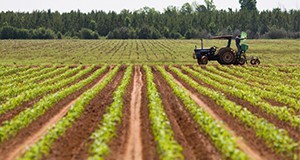Abstract
Because temperatures are relatively high and it rains a lot in the region, mineral soils in the southeastern United States tend to be naturally acidic. Managing soils for both pH and nutrients helps maintain soil fertility levels and ensure economic agricultural production. If they are not maintained in the 6.0 to 6.5 pH range, which is best for most crops, most mineral soils in the Southeast will gradually return to their natural acidic state and their fertility levels will drop. In order to keep the soil in the right range, farmers have been encouraged to make routine applications of lime. Calibrated lime requirement tests are part of standard soil tests in this region, but getting the balance right can be tricky. This 4-page fact sheet explains the factors that contribute to increased soil pH and describes methods for reducing soil pH that will reduce the chances of either under- or over-liming the soil. Written by Rao Mylavarapu, George Hochmuth, Cheryl Mackowiak, Alan Wright, and Maria Silevira and published by the Soil and Water Science Department, January 2016.
SL437/SS651: Lowering Soil pH to Optimize Nutrient Management and Crop Production (ufl.edu)
References
FDEP. 2013. "Biosolids in Florida 2012 Summary." Domestic Wastewater Section, Florida Department of Environmental Protection, Tallahassee, FL http://www.dep.state.fl.us/water/wastewater/dom/docs/BiosolidsFlorida-2012-Summary.pdf

